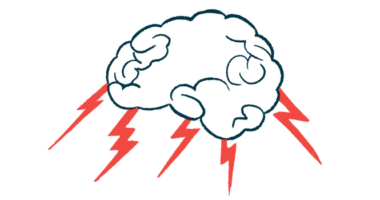Fatty Molecules in Cells May Play Role in Parkinson’s Development

Having longer-than-normal fatty molecules and an inactive enzyme called cathepsin-B in nerve cells’ recycling centers may increase the risk of developing Parkinson’s disease in people with mutations in the GBA1 gene, the disease’s most common genetic risk factor.
This is the hypothesis generated by a recent study, titled “Pathological α-syn aggregation is mediated by glycosphingolipid chain length and the physiological state of α-syn in vivo,” published in the journal Proceedings of the National Academy of Sciences, which showed an association between these factors and the development of a neurodegenerative form of Gaucher disease, a condition also associated with GBA1 mutations.
“The people who develop Parkinson’s disease probably accumulate these long [fatty] chains that are extra sticky and interact with alpha-synuclein,” Joseph Mazzulli, PhD, the study’s senior author and an associate professor of neurology at Northwestern University’s Feinberg School Of Medicine, said in a university press release.
“We hypothesize that the ones who don’t develop Parkinson’s don’t accumulate these long chains [of fatty molecules], and so are protected,” Mazzulli said.
Mazzulli and his team now plan to confirm these hypotheses in Parkinson’s disease models. Should they prove true, assessing both fatty molecule length and cathepsin-B activity could sharpen the prediction of Parkinson’s disease risk in people carrying GBA1 mutations.
The GBA1 gene provides instructions to produce glucocerebrosidase, known as GCase, an enzyme that breaks down glucocerebroside, a complex fatty molecule, into simpler fatty components that cells can reuse. This happens inside lysosomes, special cellular compartments that break down and recycle different types of molecules.
GBA1 mutations can affect GCase’s function, leading to the toxic accumulation of these complex fatty molecules, which is increasingly believed to contribute to the buildup or aggregation of proteins such as alpha-synuclein that are associated with Parkinson’s and other neurodegenerative diseases.
Researchers note that carrying a harmful mutation in one GBA1 gene copy increases the chance of developing Parkinson’s by about 10%. Meantime, having such a mutation in both gene copies — one inherited from each parent — and therefore no working GCase results in Gaucher disease, which affects many of the body’s organs and tissues.
A serious inherited condition, Gaucher is characterized by the toxic buildup of glucocerebroside inside lysosomes, leading to tissue and organ damage.
Notably, not all carriers of one GBA1 mutation will develop Parkinson’s, nor will all Gaucher disease patients show neurologic symptoms similar to Parkinson’s.
To try to determine the source of this unexplained risk, Mazzulli and his colleagues examined different cell and animal models.
First, they treated mice with a GCase inhibitor called conduritol beta epoxide or CBE. The team then observed that maturation of neurons (nerve cells), when combined with the presence of alpha-synuclein, renders these nerve cells vulnerable to the accumulation of fatty molecules called long-chain glycosphingolipids, resulting in the abnormal aggregation of alpha-synuclein.
When looking at the lysosomes of lab-grown patient-derived nerve cells with compromised GCase activity, the researchers found that these long-chain glycosphingolipids, or long-chain fatty acids, were abnormally long and especially damaging to nerve cells.
While these fatty acids were just one-tenth to one-half nanometer longer than normal — less than half the diameter of a DNA molecule — they were found to promote the formation of alpha-synuclein clumps, a hallmark of Parkinson’s disease.
Treating these nerve cells with venglustat, a medicine known to reduce the levels of long fatty molecules, resulted in fewer alpha-synuclein aggregates and reversed neuronal damage, confirming that an abnormally longer length in fatty acids was the contributing factor.
Further analysis showed these long fatty acids had neurotoxic effects only when cathepsin-B, an enzyme that breaks down alpha-synuclein in the lysosome, was inactive. Suppressing the activity of cathepsin-B in Gaucher patient-derived nerve cells blocked the protective effects of the long fatty molecule-reducing medicine.
These findings may explain the failure of a recent clinical trial testing a lipid-shortening therapy in people with Parkinson’s disease, Mazzulli noted.
“We think that patients need to have an active cathepsin-B in order for these drugs to work,” Mazzulli said.
“This discovery may help to guide future clinical trials by screening for patients with functional cathepsin-B,” Mazzulli said, adding that “alternatively, combination therapies that activate cathepsin-B while reducing [fatty molecules] may provide therapeutic benefit.”
The team now plans to analyze the presence of these long fatty acids and cathepsin-B’s activity in models of Parkinson’s disease.
“If we look for [fatty acids] length and cathepsin-B, these are two factors that can address why some patients get Parkinson’s disease and some do not,” Mazzulli said.
The study was supported by grants from the National Institutes of Health’s National Institute of Neurological Disorders and Stroke and the Michael J. Fox Foundation.








